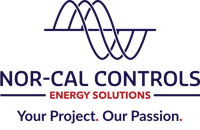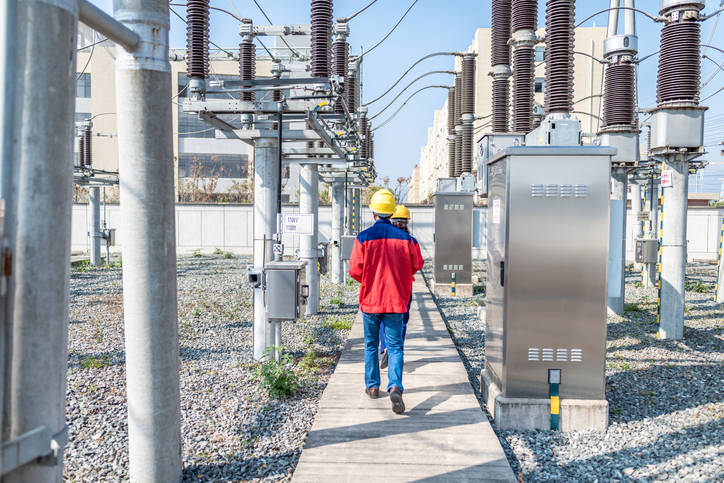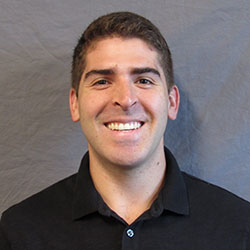We've spent several blogs on how the SCADA system interacts with the different field devices at a solar PV site, including the inverters, trackers and MET sensors. Now it's time to explore the center of the operation—the substation. The substation is the hub of the SCADA network, and houses the devices and equipment that ensure safe, reliable energy production for the grid.
1. What are common solar PV substation devices that integrate with the SCADA system?
The main substation device is the Real Time Automation Controller (RTAC), which integrates all of the substation devices and ensures they can communicate properly. RTACs can also act as data concentrators, aggregating all of the data received from the various networked devices at the solar PV site. The SCADA system can then extract that data for real-time monitoring. Some solar PV sites use separate RTACs for the substation and SCADA functions, while others use one RTAC to handle both.
Most plants have several types of meters that measure power generation, voltage, current and power values. All solar PV sites, no matter how small, will have at least a revenue meter that measures the amount of electricity generated by the plant. Specific metering requirements vary by owner, utility, IA, PPA and ISO. You can read more about those requirements here. Accurate metering of electricity generated provides critical data to allow for power generation accuracy and a stable grid.
From there are the substation protection devices and power system equipment, including relays, breakers and feeders, as well as the capacitor banks and transformers. The main breaker or recloser, located at the substation or at the POI, allows the site to be brought in or out of service as necessary.
Modern substations use Intelligent Electronic Devices (IEDs) to monitor and control the protection devices and power system equipment. IEDs are integrated microprocessors that receive data from sensors and power equipment and can issue commands, such as tripping circuit breakers in response to voltage or frequency anomalies. Common substation IEDs include circuit breaker controllers, capacitor bank switches, recloser controllers, and protective relaying devices. The IEDs can communicate directly with the SCADA system or substation RTAC. IEDs also make it possible to automate some substation functions, though much of this depends on specific ISO and utility requirements.
All substation devices and equipment must be robust, rugged, industrially hardened, and of the utmost reliability. We predominantly use and work with Schweitzer Engineering Laboratories (SEL) equipment, as well as Schneider Electric. Their devices can be easily integrated into our SCADA systems.
2. What capabilities does a SCADA system need for monitoring and controlling solar PV substation devices?
The SCADA system can connect directly to the substation devices or to the RTAC. So long as that connection and ability to communicate is there, the SCADA system can pull in all the data for monitoring.
The SCADA system can also use the substation meter readings to control the plant's inverters on the PV side and the active and reactive power on the plant level. This is done via the Power Plant Controller. You can read more about this process here.
3. How do substation devices communicate with the SCADA system? (Fiber, ethernet, Modbus, DNP, etc.)
Substation devices and equipment use a variety of different media, or means of communication, within the SCADA network. The relays may have direct fiber optic connections, serial connections using serial cables or fiber transceivers, or over an Ethernet connection. There are fewer compliance issues to deal with using a direct serial connection or fiber-to-serial connection.
Devices also need to be able to speak and understand the same language, or protocol, in order to communicate within the SCADA network. The SCADA system itself must be able to speak and understand the protocol, too. Most solar PV plant devices can speak Modbus protocol, but we typically recommend DNP3 or SEL protocol for critical devices like the substation devices. Most IEDs have built-in support for DNP3 communication. SEL fast protocol allows for an efficient, direct connection and fast Ethernet communication between SEL-specific devices.
4. What are some typical substation alarms that should be integrated into the SCADA system?
This largely depends on owner requirements. Some owners and operators only want to see critical alarms for issues that could harm equipment, affect generation, or even trip the site offline. These include the transformer monitors. Others want to see all substation alarms. There are a handful of alarms that are more or less standard for each of the relay meters. Each of the feeder breakers or capacitor banks will have a handful of alarms, such as trip coil monitors (TCM) and close coil monitors (CCM). All of these can be integrated into the SCADA system and displayed on HMI screens.
Typical substation alarms include:
- Communications to the protection devices, revenue meters, and building environment
- Breaker status alarms (over- and under-voltage trip, over- and under-frequency trip)
- Transformer alarms for oil level, winding temperature, pressure levels, and liquid temperature
5. Which HMI graphical screens need to be included with the SCADA system to represent the substation devices?

This depends on the total substation devices and alarms that are communicating with the SCADA system. If there are a handful of relays and a handful of meters that are collecting all of the active power, reactive power, power factors and alarms, then the preference is to map each of these to its own individual graphical screen as well as onto a "substation overview" screen.
The "substation overview" screen mimics a substation single line diagram and displays all of the appropriate meters and relay information for the entire plant and substation. This gives operators a good depiction of how the site is electrically set up, and from there, operators can drill down into each of the individual components and devices.
At Nor-Cal, we are flexible about designing and implementing other screens based on customer needs, such as other components or calculations needed to enhance performance and data analytics.
Why choose Nor-Cal Controls as your solar PV SCADA integrator?
Substation device monitoring and controls integration must take into account owner requirements, substation contractor input, and a host of utility, ISO, PPA and/or IA requirements. With over 11GW worth of successfully commissioned solar PV projects to date, our leadership and engineers are well-versed in many different requirements.
Not only will we ensure that your SCADA solution will meet all the requirements, we can help walk you through the entire process. We're happy to answer any questions you have. Schedule a call with us today.


